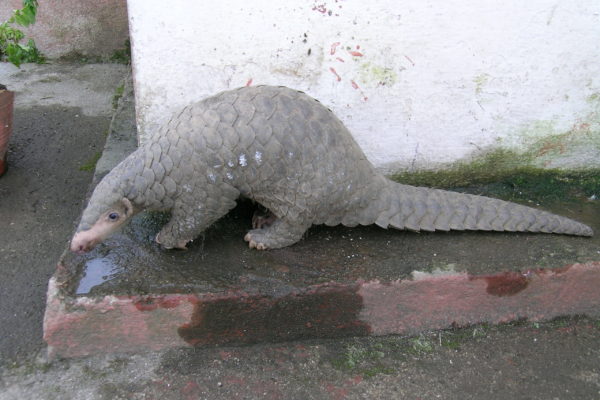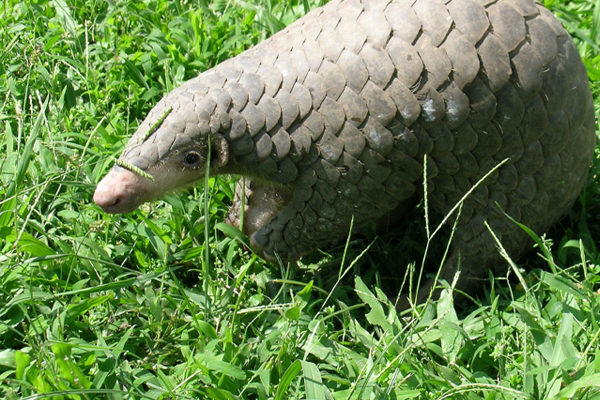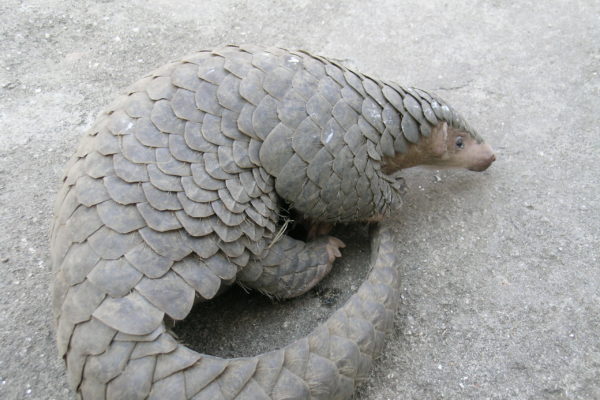Distribution
Bangladesh; Bhutan; China; Hong Kong; India; Lao People’s Democratic Republic; Myanmar; Nepal; Taiwan, Province of China; Thailand; Viet Nam.
Reproduction
Usually only one offspring is born to the Chinese pangolin after a gestation period of between 318 and 372 days. Females reach reproductive maturity towards the end of their first year.
Distinguishing characteristics
The Chinese pangolin is distinguished from other Asian pangolins by its almost helmeted appearance, smaller scales than the Indian pangolin, a larger ear pinna, a post-anal depression in the skin, and a narrowing near the distal end of the tail. While its range overlaps with that of the Sunda pangolin, these species can be distinguished by the number of scale rows across the back, the relative length of the claws on their forelimbs, and by the length and shape of the tail, being shorter and blunter in the Chinese pangolin. The lifestyle between the Sunda pangolin and Chinese pangolin also differs with the former being more arboreal and the latter more fossorial.
Facts
Chinese pangolins spend the winter months in deep burrows that maintain stable temperatures and are excavated near termite nests, which supply a source of food. In China, the species’ distribution is understood to be closely correlated with two termite species (Coptotermes formosanus and Termes formosanus).





